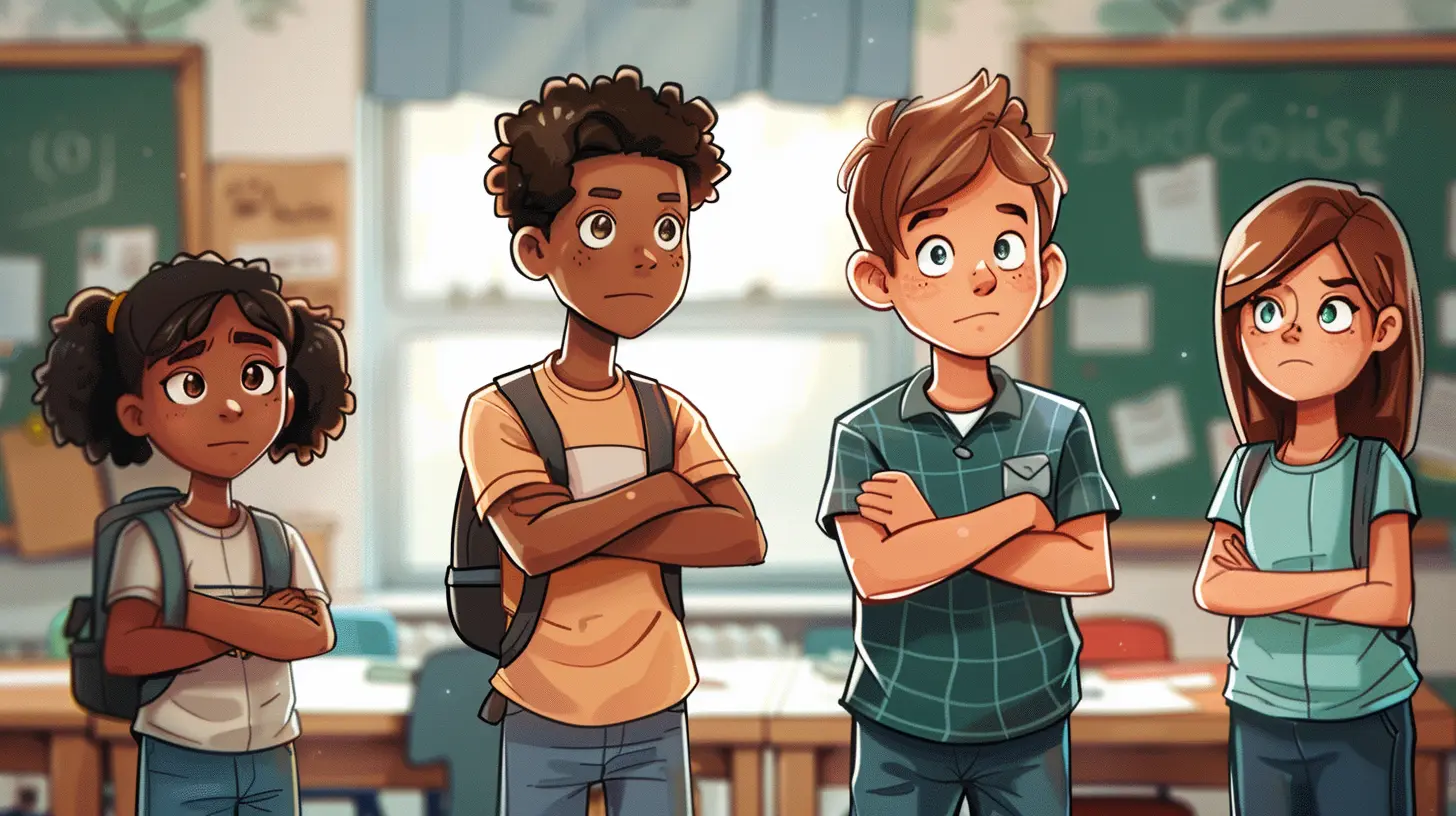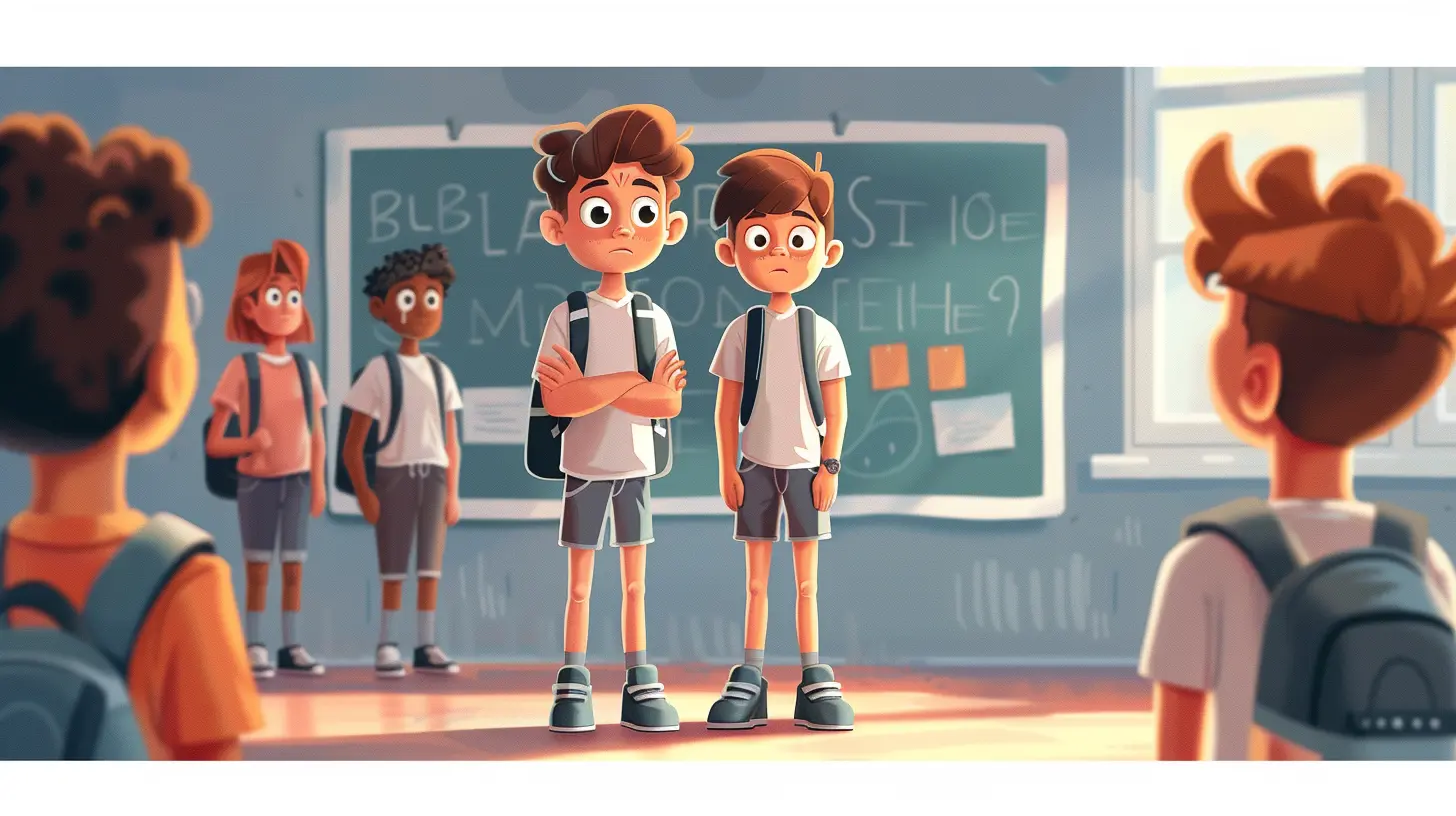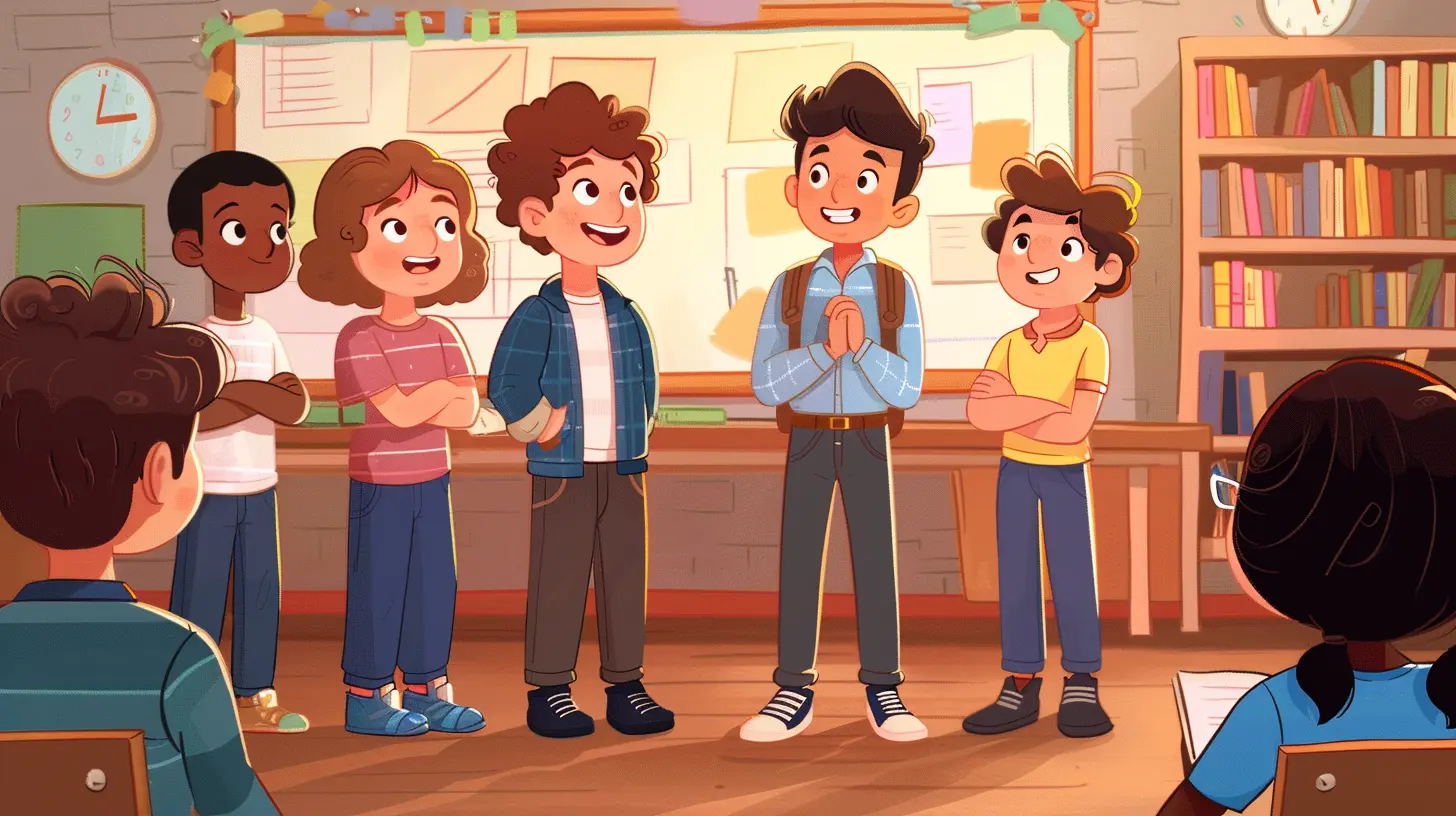How to Use School Assemblies to Address Bullying
8 September 2025
Bullying is that ugly shadow that creeps into school hallways—often unnoticed until it's too late. But what if we could shine a big, bright spotlight on it? One of the most underused tools in a school's toolbox is the assembly. Yeah, those gatherings where students shuffle in, half-asleep, to listen to announcements. But what if we flipped the script and used school assemblies to squash bullying before it starts?
Let’s talk about how to use school assemblies to address bullying in a real, powerful, and lasting way.

Why School Assemblies Matter More Than You Think
Think about it—where else do you have your entire student body under one roof? Assemblies gather everyone in one space, creating a prime moment to reach students collectively, set a tone, spark conversations, and build community. It’s like having the mic in front of an entire school—why not use it to say something that matters?Assemblies can create a moment of pause. A reset. A chance to remind everyone: “Hey, this is who we are. This is what we stand for.”
More Than Just Pep Rallies
Sure, assemblies are known for sports hype and honoring achievements. But when used right, they can educate, motivate, and unite students under shared values—like respect, kindness, and standing up for others.
The Power of a Unified Message Against Bullying
Bullying thrives in silence. It feeds off isolation. An effective assembly challenges that silence. When the school openly talks about bullying, its effects, and how to fight it, it tells students: “You are not alone, and we’ve got your back.”The Domino Effect of Awareness
One powerful, well-crafted assembly can create ripple effects. A single story shared can light up empathy in students, push bystanders to act, and give victims the courage to speak up. The goal is to shift culture—and it starts with a message that hits home.
Key Elements of an Anti-Bullying Assembly
Let’s break it down. Here’s what makes an anti-bullying assembly impactful—not cringe-worthy.1. Start with Stories, Not Stats
You could throw numbers on a PowerPoint all day, but nothing sticks like a real story. Invite someone to share their personal experiences with bullying—whether it’s a student, teacher, or even a guest speaker.Storytelling builds empathy. And empathy is the enemy of bullying.
2. Get Students Involved
Assemblies shouldn’t feel like a lecture. Get students to lead parts of the event. Skits, role-plays, spoken-word poetry, or digital media projects can make the message resonate more authentically.Peer-to-peer influence is powerful. When students see their classmates involved, the message hits closer to home.
3. Make It Interactive
Ask questions. Host polls. Use QR codes to link students to resources or feedback forms. The more interactive, the better. Keep them engaged instead of zoning out.Engagement turns passive listeners into active participants.
4. Deliver a Clear Message
Keep it simple. Something like:- “No one deserves to feel unsafe at school.”
- “Bystanders have the power to break the cycle.”
- “Bullying is never just a joke.”
Short, strong statements stick. Repeat them like mantras.
5. Teach, Don’t Preach
Students can smell a lecture from a mile away. They tune out when they feel judged or lectured. Instead, offer insights, show impact, and appeal to their sense of justice and empathy.Nobody likes being told what to do—but everyone likes feeling understood.

Incorporating Real-Life Scenarios
Sometimes students don’t even realize what counts as bullying—especially in the digital world. Assemblies are a great place to break down what modern bullying looks like:- Cyberbullying
- Exclusion from social groups
- Rumor spreading
- Manipulation or gaslighting
Use real-life, relatable scenarios. “What if your best friend suddenly ghosted you after screenshots of your texts were shared in a group chat?” These scenarios make students reflect: “Have I done that? Has that happened to me?”
Consistency is Key
One anti-bullying assembly isn’t a magic wand. It’s the beginning. Keep that momentum alive.Schedule Follow-Up Assemblies
Plan one each term focused on different aspects—like digital citizenship, peer pressure, mental health, and restorative practices. Keep the conversation alive, not seasonal.Tie Into School-Wide Initiatives
Align your assemblies with campaigns like National Bullying Prevention Month, Unity Day, or anti-hate initiatives. Incorporate themed dress days, poster contests, or kindness challenges.It’s not just about the talk—it’s about building a culture.
Bringing in Experts and Role Models
Students respond to authenticity. Invite people with real stories and lived experiences—survivors, anti-bullying activists, psychologists, or even local celebrities with something personal to share.Sometimes, hearing hard truths from someone outside the school context makes a message hit harder.
Use Video Testimonials
Can’t bring in a speaker? No worries—use YouTube clips, documentaries, or social media testimonials from people who’ve overcome bullying or turned their pain into purpose.Videos can be great visual storytelling, especially for digital-native teens.
Reinforcement Through Staff Participation
Teachers aren’t just bystanders—they’re role models. When staff actively participate in assemblies, it sends a message that this isn’t just a student issue, but a whole-community issue.Encourage teachers to share short stories, support students, or just be present and attentive during assemblies. That simple act of being there speaks volumes.
Creating a ‘Zero Tolerance, Full Support’ Culture
Assemblies are a great platform to communicate your school’s policy loud and clear:- What constitutes bullying?
- What are the consequences?
- What supports are available to victims?
But remember, it’s not just about zero-tolerance. Students need to know they’re not just punished—they're supported, heard, and guided.
Tapping Into Emotions (Not Just Rulebooks)
Effective assemblies don’t just state rules; they pull heartstrings. Use music, visuals, and storytelling to genuinely move students. Make them laugh…but also make them think.The goal? Leave them with that gut-feeling: “This matters. I matter. We all matter.”
Empowering the Bystanders
Here’s the real game-changer: mobilizing the bystanders. Most bullying continues not because everyone’s mean—but because no one steps in.Assemblies should reinforce:
- How to safely intervene
- When to report (and who to report to)
- The power of being an ally
Make it cool to stand up for someone else. Celebrate small acts of courage.
Celebrating Kindness
Flip the narrative. Addressing bullying shouldn’t just focus on the problem—it should spotlight the solutions too.Use assemblies to:
- Highlight “Kindness Champions”
- Share positive stories of inclusion
- Give shoutouts for random acts of kindness
By celebrating the good stuff, you're showing students the kind of behavior that gets noticed and rewarded.
Practical Logistics to Keep in Mind
Before you dive in, make sure your anti-bullying assembly is logistically tight. Here’s a quick checklist:- 📅 Choose the right time (avoid exam pressure days!)
- 🎤 Test your AV equipment beforehand
- 🧍♂️ Assign teacher responsibilities for crowd control
- 📢 Promote it beforehand so students know it’s important
- 📣 Debrief afterwards in classrooms or homerooms
If it’s worth doing, it's worth doing well.
Wrapping It Up with Action Steps
Don’t let the momentum die as students walk out of the gym. End your assembly with a call-to-action:- “Commit to kindness” contracts
- A wall of pledges against bullying
- Journaling prompts for reflection
- QR codes to report bullying anonymously
Always leave your audience with something to do. That helps the message stick.
Final Thoughts
School assemblies are not just time-fillers—they're culture-shapers. When used intentionally, they can change the way students think, feel, and act around bullying.So next time you’re planning an assembly, don’t just focus on announcements or awards. Use that captive audience to spark something powerful. Address bullying head-on, not with fear—but with courage, connection, and community.
Let’s use that mic for more than just the lunch menu.
all images in this post were generated using AI tools
Category:
Bullying PreventionAuthor:

Anita Harmon
Discussion
rate this article
1 comments
Chase McGarvey
Great insights! School assemblies can truly make a difference in addressing bullying. It's all about creating a safe space for students to share and connect!
September 30, 2025 at 3:26 AM

Anita Harmon
Thank you! I completely agree—school assemblies play a vital role in fostering a supportive environment for students to discuss and combat bullying.


